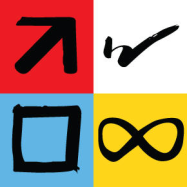Often times when I work with high level leaders I’m shocked by the lack of real leadership development they have experienced. Usually highly intelligent and talented people, they have risen through the corporate ranks to a position of leadership on their technical skills alone. Here is where leadership coaching comes into play, which can be the difference between a highly talented employee that meets goals and an integral leader that changes the game. Below are a few tips on how to ensure your leadership coaching is developing great leaders.
-
Self-Awareness: Start by helping the leader become aware of how s/he shows up as a leader. What is his/her personality? Thinking style? Communication style? Behavior? You can’t get to where you want to go without knowing where you are, so first help your clients start with this important self insight.
-
Others-Awareness: Provide a frame to see how these different styles/preferences show up in the people around them and perhaps more importantly, how to use this knowledge to meet people where they are. Leaders can gain important insight when considering what the message looks like from the followers’ perspective. Understanding follower personality preferences, behavioral styles, needs, etc. and approaching leadership from that perspective is one of the most powerful tools that a developed leader have.
-
Situational-Awareness: A third important piece of the puzzle is what the needs of the situation are. Sometime the situation means we just need to get things done, other times we need to slow down and think outside the box. Help your client develop an awareness of what the situation calls for.
-
Putting It All Together: In my work with leaders I have found that the most successful leaders, the ones that their people look up to as great leaders, are those that can effectively and continuously put these three elements together. The most developed leaders are those that understand themselves from the inside out, meet their people where they are and incorporate the needs of the situation in their approach.
At Focus Leadership we have developed the perfect leadership coaching tool to guide this very process called the FEBI. Click on the link below to download a free FEBI Coaching Guide.






